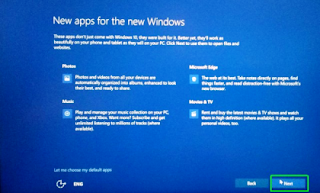If you can't have it, force it. This seems to be mantra adopted by Microsoft when it comes to convincing users to update their operating system to Windows 10.
In the next couple of days, Microsoft will start forcing Windows 10 updates on machines that are eligible for the free upgrade. Windows 10 is now a recommended update, which means it’ll download itself on Windows 7 and Windows 8.1 PCs and attempt to install.
"As we shared in late October on the Windows Blog, we are committed to making it easy for our Windows 7 and Windows 8.1 customers to upgrade to Windows 10," a Microsoft spokesperson told The Verge. "We updated the upgrade experience today to help our customers, who previously reserved their upgrade, schedule a time for their upgrade to take place."
In theory, there’s really nothing wrong with moving to Windows 10. There may be some privacy concerns, but they can be mitigated. And anybody can definitely roll their computer back to the previous Windows version if the latest Microsoft OS doesn’t meet their needs.
But the fact that Windows 10 will begin downloading automatically on computers later this week might be annoying to certain users. For example, the bulky Windows 10 install files will take up a huge chuck of the storage space. Not to mention that the background download might lead to data overages if parts of the download happen over cellular connections. If users connect via 3G or 4G very often, they better turn off the automatic update download features on their machine.
If those are not problems for users, then the recommended Windows 10 should have no other negative impact on their Windows experience.
In the next couple of days, Microsoft will start forcing Windows 10 updates on machines that are eligible for the free upgrade. Windows 10 is now a recommended update, which means it’ll download itself on Windows 7 and Windows 8.1 PCs and attempt to install.
"As we shared in late October on the Windows Blog, we are committed to making it easy for our Windows 7 and Windows 8.1 customers to upgrade to Windows 10," a Microsoft spokesperson told The Verge. "We updated the upgrade experience today to help our customers, who previously reserved their upgrade, schedule a time for their upgrade to take place."
In theory, there’s really nothing wrong with moving to Windows 10. There may be some privacy concerns, but they can be mitigated. And anybody can definitely roll their computer back to the previous Windows version if the latest Microsoft OS doesn’t meet their needs.
But the fact that Windows 10 will begin downloading automatically on computers later this week might be annoying to certain users. For example, the bulky Windows 10 install files will take up a huge chuck of the storage space. Not to mention that the background download might lead to data overages if parts of the download happen over cellular connections. If users connect via 3G or 4G very often, they better turn off the automatic update download features on their machine.
If those are not problems for users, then the recommended Windows 10 should have no other negative impact on their Windows experience.


No comments:
Post a Comment